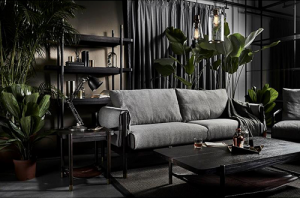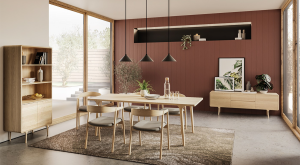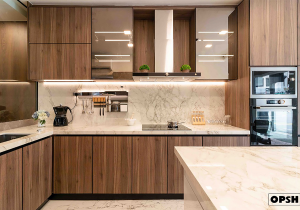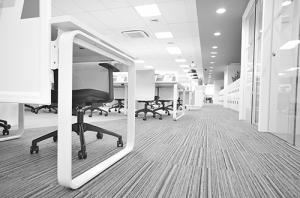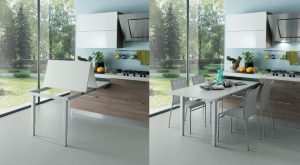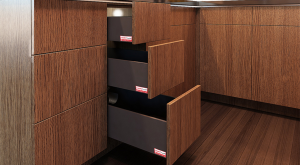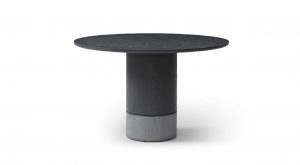Designing with a Diverse Mindset: Interview with Thinkk Studio
1.Can you share with us how Thinkk was started?
Since 2008, we have been working together as Thinkk Studio.
Thinkk Studio began as a duo act. Our background as interior designers meant that we were responsible for selecting items appropriate to a particular niche, and a lot of times what we were looking for simply did not exist. This pursuit of perfection cultivated our fascination with the manufacturing industries. Eventually, we came to realise that Thailand had been a long-time production hub for many internationally recognised brands, however, there were not nearly as many furniture pieces and products from Thai designers that were given the same level of recognition at the time. That became an encouragement for us to explore product design; we attended lectures and participated in workshops and contests before receiving the Furniture Design Award from Singapore Furniture Industries Council (SFIC) in 2010, after which we went separate ways in search of wisdom.
Decha Archjananun completed a Master of Advanced Studies (MAS) in Design for Luxury & Craftsmanship at École cantonale d’art de Lausanne (ECAL) of Switzerland from 2010 – 2011. His graduation piece, “Weight Vases”, attracted the interest and investment from Specimen Editions, a French contemporary furniture collection, and it is still in production and distribution globally to this day.
Ploypan Theerachai completed a Master of Fine Arts (MFA) in Design – Interior architecture and Furniture Design at Stockholm’s Konstfack in Sweden from 2010 to 2012.

2.What is the philosophy of Thinkk?
As our studio name Thinkk suggests, we pay more attention to the thinking process.

3.In a world full of designers, how do you set yourself apart from the rest?
We have never thought of it that way, so it is hard to answer this question.
4.How is the design scene like in Thailand right now? Has it seen any significant changes due to Covid-19?
As people are sticking more to their screen and home, most new design products in Thailand try to respond to this new behaviour, focusing on lifestyle at home and a fun experience online.

5.There has been some political unrest and protests in Thailand in 2020-2021, has that affected your practice as a designer? Do you think design has the power to effect change in the area of politics?
The Political situation now has affected everyone in Thailand. I believe design can direct or suggest the user’s behaviour, but it doesn’t have enough power to change the political system here.
6.With Covid-19 and the protests, how has it affected your practice and the Thai design industry in general?
In general, Covid-19 has had the greatest effect since all the exhibitions and trade fairs have had to pause; I’m sure you know what the commercial effects of that are. If there were just the protests in Thailand, it wouldn’t have affected our practice as much, since business can function as usual in both domestic and export markets.
7.Being based in Thailand where there is still a good pool of traditional craftsmen – do you often collaborate with these craftsmen?
Yes, we like handmade products both in an aesthetic way and how it keeps the legacy going.
8.Do you often experiment with new materials or redefine traditional crafting? What are some of the designs you have done that embody these new ideas?
Yes, we do design products with some elements of craftsmanship. However, the technique or material we pick needs to fit today’s lifestyle.
9.Do you design with only local materials? What are your views on sustainability?
We work with any kind of material, not just local ones. But if a local material can meet the function of the design, we’d prefer to use it rather than using an imported material.
10.You have both studied and practised in western countries – from your experience, what do you think are the main differences in the design approach and culture for west and east?
I think we use the same design process, from the study of it, to the research and exploration.
11.Do you consider your design a fusion of western and eastern ideals?
It depends on which design. Some designs we pick eastern elements to enhance the story of the product. Some designs we just work towards the best result based on study and research.

12.Do you think it is possible to define what Thai Design means? Or do you think that design is not defined by geographical boundaries?
Thai design is about diversity, I guess.
13.What do you think are some of the advantages of being a Thai designer?
I think in Thailand we have lots of materials for design and it is easy to access the production process.
14.What are some of the qualities that are important to you in a design?
Design that answers the best function of itself.
15.Thailand has been known to many of us as a bold frontrunner in the Asian design scene, what do you think is the je ne sais quoi of Thai designs?
As a Thai designer, we don’t have a fixed mindset or a strict to-the-rule character and so on. From my point of view, the creativity of exploring a new thing is the key.
16. Do you think that the direction and thinking of young designers in Thailand has significantly changed and evolved?
As technology becomes closer to people, there are so many more options for a young designer. Creative work on digital and online markets is very popular among young designers here.
17. Thinkk has done many nice product designs. Which are your favourite(s) and why?
Most of the time the product that we are working on is our favorite one at that time, because we are focusing on it.
18.Which was the most challenging piece of design you have done?
We have been working on materials from waste since 2018—the project is called “City Materials”—and we have been continuing it until now. The most challenging part is how to bring these materials into the real market, which involves so many partners such as engineers, researchers, and material scientists to make it happen.

19.What is the main difference between being an interior designer and a product designer?
Of course, the scale of work is different, as well as the working process. In product design, the starting idea could be from our own initiative or the client brief, but for an interior designer most of the projects have a client’s brief that needs to be achieved.
20.What would be your advice to a young designer in Thailand?
Set the goal for yourself and go for it.
[by Kelley Cheng]
To find out more about Thinkk Studio, check out their website:
28 April 2021


